
Abando: The Beating Heart of Bilbao
Explore Abando, Bilbao's central neighbourhood brimming with cultural landmarks, vibrant shopping streets, exquisite dining options, and lush green spaces.
Abando, often considered the heart of Bilbao, is a vibrant and dynamic neighbourhood that offers tourists a rich blend of culture, history, and modernity. Situated on the right bank of the Nervión River, Abando serves as an ideal starting point for exploring the city, thanks to its central location and excellent transport links. One of the most iconic landmarks in Abando is the Guggenheim Museum, a masterpiece of contemporary architecture that has put Bilbao on the global cultural map. Art lovers will also appreciate the Fine Arts Museum, which houses an impressive collection of Spanish and European art. For those interested in architecture, Abando offers a mix of styles ranging from the historic Bilbao Abando railway station to the modernist Zubizuri Bridge. Shopping enthusiasts will find plenty to love in Abando, with the Gran Vía de Don Diego López de Haro serving as the main commercial artery. Here, you'll find a mix of high-end boutiques, international brands, and local shops. When it comes to dining, Abando doesn't disappoint; the area is teeming with pintxo bars and restaurants where you can sample Basque cuisine at its finest. Don't forget to visit the Ribera Market, one of the largest covered markets in Europe, for a taste of local produce and delicacies. Abando is also home to numerous parks and green spaces, providing a welcome respite from the urban hustle and bustle. The Doña Casilda Iturrizar park, with its beautiful gardens and serene lake, is perfect for a leisurely stroll. Finally, Abando's vibrant nightlife offers a plethora of options, from cozy bars to lively nightclubs, ensuring that your evenings are as exciting as your days.
Local tips in Abando
- Visit the Guggenheim Museum early in the morning to avoid crowds.
- Take a leisurely walk along the Nervión River for stunning views of the city.
- Sample pintxos at local bars; they are a must-try Basque culinary tradition.
- Use the Bilbao Metro for convenient access to other parts of the city.
- Check out local events and festivals; Abando often hosts cultural activities.
Abando: The Beating Heart of Bilbao
Abando, often considered the heart of Bilbao, is a vibrant and dynamic neighbourhood that offers tourists a rich blend of culture, history, and modernity. Situated on the right bank of the Nervión River, Abando serves as an ideal starting point for exploring the city, thanks to its central location and excellent transport links. One of the most iconic landmarks in Abando is the Guggenheim Museum, a masterpiece of contemporary architecture that has put Bilbao on the global cultural map. Art lovers will also appreciate the Fine Arts Museum, which houses an impressive collection of Spanish and European art. For those interested in architecture, Abando offers a mix of styles ranging from the historic Bilbao Abando railway station to the modernist Zubizuri Bridge. Shopping enthusiasts will find plenty to love in Abando, with the Gran Vía de Don Diego López de Haro serving as the main commercial artery. Here, you'll find a mix of high-end boutiques, international brands, and local shops. When it comes to dining, Abando doesn't disappoint; the area is teeming with pintxo bars and restaurants where you can sample Basque cuisine at its finest. Don't forget to visit the Ribera Market, one of the largest covered markets in Europe, for a taste of local produce and delicacies. Abando is also home to numerous parks and green spaces, providing a welcome respite from the urban hustle and bustle. The Doña Casilda Iturrizar park, with its beautiful gardens and serene lake, is perfect for a leisurely stroll. Finally, Abando's vibrant nightlife offers a plethora of options, from cozy bars to lively nightclubs, ensuring that your evenings are as exciting as your days.
Iconic landmarks you can’t miss
Guggenheim Museum Bilbao
Explore the stunning Guggenheim Museum Bilbao, an architectural wonder showcasing modern art and offering a rich cultural experience in the heart of the Basque Country.

Zubizuri
Discover the architectural beauty of Zubizuri Bridge in Bilbao, where modern design meets stunning urban scenery.

Iturrizar Parkea
Explore Iturrizar Parkea, a serene urban park in Bilbao perfect for relaxation, nature walks, and artistic discovery amidst beautiful landscapes.

Federico Moyúa enparantza
Discover the vibrant Federico Moyúa Plaza, a stunning urban oasis in the heart of Bilbao, surrounded by remarkable architecture and rich cultural experiences.
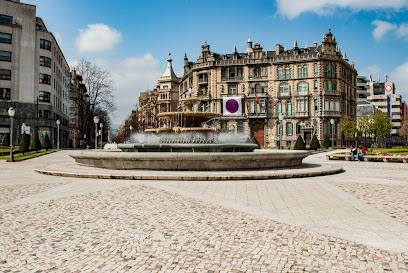
Museum of Fine Arts of Bilbao
Discover timeless masterpieces and contemporary art at the Museum of Fine Arts of Bilbao, where history and creativity converge in a stunning setting.
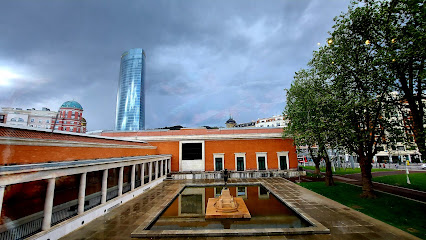
Bilboko Donejakue Katedrala
Discover the breathtaking Bilboko Donejakue Katedrala, a Gothic masterpiece and spiritual haven in the heart of Bilbao, Spain.

Albiako Lorategiak
Explore Albiako Lorategiak, a lush park in Bilbao, ideal for relaxation, nature walks, and experiencing the cultural vibe of the city.

Txabarri Jauregia
Explore the architectural beauty and historical significance of Txabarri Jauregia, a stunning palace in the heart of Bilbao's Abando district.

Monumento a John Adams
Discover the Monument to John Adams in Bilbao, a stunning tribute to freedom and democracy in the heart of Abando's vibrant streets.

Paseo de las Fuentes/ Iturrien Ibiltokia
Experience the beauty of Bilbao at Paseo de las Fuentes, a scenic promenade adorned with fountains and lush landscapes, perfect for leisurely strolls.
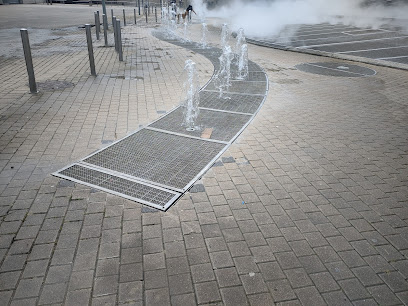
Unmissable attractions to see
Plaza Nueva
Discover the historical charm of Plaza Nueva in Bilbao, a vibrant square filled with tapas bars, stunning architecture, and lively local culture.

Itsasmuseum Bilbao
Explore the rich maritime history of the Basque Country at Itsasmuseum Bilbao, where engaging exhibits and stunning views await every visitor.

Pérgola
Discover the serene beauty of Pérgola in Bilbao, a floral oasis perfect for relaxation and immersing in nature's charm amidst urban life.

Paseo de las Fuentes/ Iturrien Ibiltokia
Explore the enchanting Paseo de las Fuentes in Bilbao, where stunning fountains and lush gardens create a serene atmosphere for all visitors.

Essential places to dine
El Globo tavern
Experience authentic Basque flavors at El Globo Tavern - where tradition meets innovation in the heart of Bilbao.
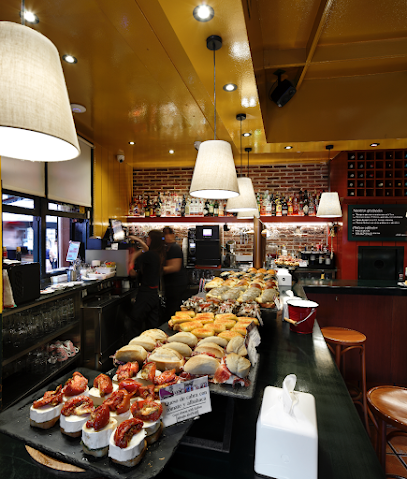
Gure Toki
Discover authentic Basque flavors at Gure Toki - where traditional tapas meet contemporary cuisine in the heart of Bilbao.

Restaurante Abando
Discover the rich flavors of Basque cuisine at Restaurante Abando in Bilbao – a culinary haven offering authentic dishes in a welcoming atmosphere.

COPPOLA & SOLOMONK (NON STOP KITCHEN)
Experience authentic Italian flavors at Coppola & Solomonk, where every dish is crafted with passion and served in a warm ambiance.

Bilbao Berria Ledesma
Experience exquisite Basque fusion cuisine at Bilbao Berria Ledesma - where tradition meets innovation in every dish.

Restaurante Batzoki de Abando / Abandoko Batzokia
Experience authentic Basque cuisine at Restaurante Batzoki de Abando in Bilbao – where tradition meets flavor in every dish.

La Olla jatetxea
Discover authentic Basque flavors at La Olla Jatetxea—Bilbao's top spot for delicious pintxos and a vibrant dining experience.

Restaurante Nido Bilbao Cocina Vasca, Txuleton en Bilbao
Discover the flavors of Basque cuisine at Restaurante Nido Bilbao - where tradition meets exquisite taste in every dish.

Restaurante Porrue
Experience authentic Spanish barbecue at Restaurante Porrue in Bilbao - where tradition meets culinary excellence.

Mugarra
Discover Mugarra in Bilbao - where Mediterranean flavors meet Spanish culinary traditions in an inviting atmosphere.

Markets, malls and hidden boutiques
Natura
Explore the vibrant gift shop Natura in Bilbao for unique souvenirs and stylish clothing that capture the essence of Basque culture.

BELAZA GALLERY Bilbao
Discover unique fashion finds at Belaza Gallery, a boutique that celebrates style with vintage and contemporary clothing and accessories in the heart of Bilbao.

Bilbao 48007 CONCEPT STORE
Discover unique gifts, fashion accessories, and local artistry at Bilbao 48007 CONCEPT STORE, a must-visit destination for every traveler.

The BILBAO store
Explore The BILBAO Store for unique gifts, handmade crafts, and authentic souvenirs that embody the spirit of the Basque Country.

b54
Discover the essence of Bilbao at b54, a boutique offering unique local fashion and artisan treasures in a stylish setting.

Bella Store Bilbao
Explore Bella Store Bilbao for unique souvenirs that reflect the vibrant culture and artisan craftsmanship of the Basque Country.

Veritas Boutique
Explore Veritas Boutique in Bilbao for a unique shopping experience filled with exquisite fashion and personalized service.
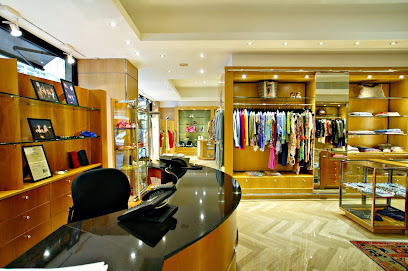
Arropame Y
Discover unique fashion and exquisite perfumes at Arropame Y, a stylish boutique in the heart of Bilbao, perfect for every fashion enthusiast.

BALABOOSTE EL CORTE INGLES BILBAO
Discover unique gifts and stylish fashion accessories at Balabooste El Corte Ingles in the heart of Bilbao's vibrant shopping district.
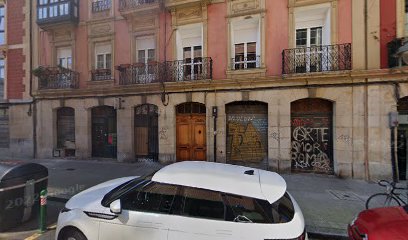
CAMPO MARZIO BILBAO
Discover the charm of Bilbao at Campo Marzio, your go-to gift shop for unique souvenirs and artistic treasures that capture the city's vibrant spirit.
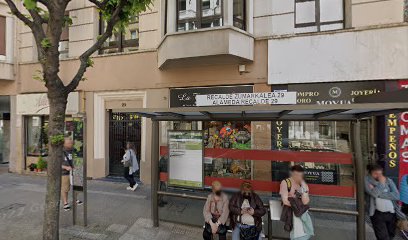
Essential bars & hidden hideouts
La Antigua Cigarrería
Experience the vibrant nightlife of Bilbao at La Antigua Cigarrería, where classic cocktails meet modern mixology in a stylish setting.

Sir Winston Churchill Pub
Discover the lively atmosphere and exquisite cocktails at Sir Winston Churchill Pub in Bilbao, the perfect spot for an unforgettable night out.

Molly Malone
Discover Molly Malone, a lively Irish pub in Bilbao, where authentic cuisine meets a vibrant atmosphere for an unforgettable experience.

La Carbonería
Discover the vibrant nightlife of Bilbao at La Carbonería, a lively pub offering local drinks, live music, and a cozy atmosphere.

Penguin Bar
Experience the lively atmosphere and exceptional craft beers at Penguin Bar in Bilbao's vibrant Abando district.

Gin Fizz Cocktail Bar
Experience the vibrant nightlife of Bilbao at Gin Fizz Cocktail Bar, where creative cocktails and a lively atmosphere await every visitor.

Abadía del Gin&Tonic
Discover the vibrant nightlife of Bilbao at Abadía del Gin&Tonic - a premier destination for gin lovers and socializers alike.

La Barmacia Bilbao - Copas y cóctel
Experience the vibrant nightlife of Bilbao at La Barmacia, a pub and cocktail bar offering exquisite drinks and delicious tapas.

Atelier
Discover the vibrant atmosphere of Atelier, a chic lounge in Bilbao, perfect for unwinding with friends and enjoying expertly crafted drinks.

Hunky Dory
Experience the vibrant cocktail culture of Bilbao at Hunky Dory, where innovative drinks and a lively atmosphere await.
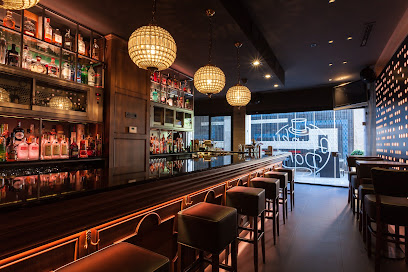
Local Phrases
-
- HelloHola
[oh-lah] - GoodbyeAdiós
[ah-dee-ohs] - YesSí
[see] - NoNo
[noh] - Please/You're welcomePor favor/De nada
[por fah-vor/deh nah-dah] - Thank youGracias
[grah-thyahs] - Excuse me/SorryPerdón/Lo siento
[pehr-dohn/loh syen-toh] - How are you?¿Cómo estás?
[koh-moh ehs-tahs] - Fine. And you?Bien. ¿Y tú?
[byen. ee too] - Do you speak English?¿Hablas inglés?
[ah-blahs een-glehs] - I don't understandNo entiendo
[noh ehn-tee-ehn-doh]
- HelloHola
-
- I'd like to see the menu, pleaseMe gustaría ver la carta, por favor
[meh goo-stah-ree-ah behr lah kahr-tah, por fah-vor] - I don't eat meatNo como carne
[noh koh-moh kahr-neh] - Cheers!¡Salud!
[sah-loohd] - I would like to pay, pleaseMe gustaría pagar, por favor
[meh goo-stah-ree-ah pah-gar, por fah-vor]
- I'd like to see the menu, pleaseMe gustaría ver la carta, por favor
-
- Help!¡Ayuda!
[ah-yoo-dah] - Go away!¡Vete!
[veh-teh] - Call the Police!¡Llama a la Policía!
[yah-mah ah lah poh-lee-see-ah] - Call a doctor!¡Llama a un médico!
[yah-mah ah oon meh-dee-koh] - I'm lostEstoy perdido/a
[ehs-toy pehr-dee-doh/ah] - I'm illEstoy enfermo/a
[ehs-toy ehn-fehr-moh/ah]
- Help!¡Ayuda!
-
- I'd like to buy...Me gustaría comprar...
[meh goo-stah-ree-ah kohm-prar] - I'm just lookingSolo estoy mirando
[soh-loh ehs-toy mee-rahn-doh] - How much is it?¿Cuánto cuesta?
[kwan-toh kwehs-tah] - That's too expensiveEsto es demasiado caro
[ehs-toh ehs deh-mah-syah-doh kahr-oh] - Can you lower the price?¿Puedes bajar el precio?
[pweh-dehs bah-har ehl preh-syoh]
- I'd like to buy...Me gustaría comprar...
-
- What time is it?¿Qué hora es?
[keh oh-rah ehs] - It's one o'clockEs la una en punto
[ehs lah oo-nah ehn poon-toh] - Half past (10)Las diez y media
[lahs dyehs ee meh-dee-ah] - MorningMañana
[mah-nyah-nah] - AfternoonTarde
[tahr-deh] - EveningNoche
[noh-cheh] - YesterdayAyer
[ah-yehr] - TodayHoy
[oy] - TomorrowMañana
[mah-nyah-nah] - 1Uno
[oo-noh] - 2Dos
[dohs] - 3Tres
[trehs] - 4Cuatro
[kwah-troh] - 5Cinco
[theen-koh] - 6Seis
[sehs] - 7Siete
[syeh-teh] - 8Ocho
[oh-choh] - 9Nueve
[nweh-veh] - 10Diez
[dyehs]
- What time is it?¿Qué hora es?
-
- Where's a/the...?¿Dónde está...?
[dohn-deh ehs-tah] - What's the address?¿Cuál es la dirección?
[kwal ehs lah dee-rehk-syon] - Can you show me (on the map)?¿Puedes mostrarme (en el mapa)?
[pweh-dehs mohs-trar-meh (ehn ehl mah-pah)] - When's the next (bus)?¿Cuándo es el próximo (autobús)?
[kwan-doh ehs ehl proh-ksee-moh (ow-toh-boos)] - A ticket (to ....)Un billete (a ....)
[oon bee-yeh-teh (ah)]
- Where's a/the...?¿Dónde está...?
History of Abando
-
Abando was established in the 19th century as part of the expansion of Bilbao. Originally a small fishing village, it rapidly transformed into a bustling urban area due to the industrial revolution. The neighborhood's development was propelled by its strategic location along the Nervión River, facilitating trade and commerce.
-
During the late 19th and early 20th centuries, Abando became central to Bilbao's industrial growth. As factories and shipyards emerged, the area attracted a significant workforce from various regions. This period was marked by the construction of iconic buildings, such as the Grand Hotel Domine and the Plaza de Moyúa, which reflect the architectural trends of the time.
-
In the mid-20th century, Abando experienced a cultural renaissance, becoming a hub for arts and education. The establishment of the Bilbao Fine Arts Museum in 1945 marked a significant investment in cultural infrastructure, showcasing both local and international art. The neighborhood also became known for its vibrant café culture and social life.
-
The late 20th and early 21st centuries saw extensive urban regeneration projects in Abando. The most notable is the development of the Guggenheim Museum Bilbao in 1997, which revitalized the area and transformed it into a cultural hotspot. This architectural landmark has not only redefined the skyline but has also significantly boosted tourism and the local economy.
-
Today, Abando is a blend of historical charm and modernity. The neighborhood is characterized by its mix of residential areas, commercial districts, and cultural institutions. The historic architecture coexists with contemporary buildings, reflecting the evolution of Bilbao as a city that honors its past while embracing the future.
Abando Essentials
-
Abando is centrally located in Bilbao, making it easily accessible from various neighborhoods. You can reach Abando from the airport via the Bizkaia Transport Consortium’s bus service (A3247) which takes about 20 minutes. If you’re coming from the Old Town (Casco Viejo), take the metro from Casco Viejo station to Abando station (2 stops). The journey takes about 10 minutes. Local trams and buses also connect Abando with other areas of the city.
-
Abando is well-served by public transportation. The metro is a convenient option, with Abando station providing access to lines that connect to various parts of the city. Buses run frequently, and tram services also operate within the neighborhood. For a more leisurely pace, consider renting a bicycle; several bike-sharing services are available. Walking is also a great way to explore the area, with many attractions located within close proximity.
-
Abando is generally a safe neighborhood for tourists, but standard precautions are recommended. Avoid poorly lit areas at night and keep an eye on your belongings, especially in crowded places like the Abando train station. Areas near the outskirts of Abando have reported higher instances of petty crime, such as pickpocketing. Always stay vigilant and aware of your surroundings.
-
In case of an emergency, dial 112 for immediate assistance. For medical emergencies, hospitals such as Hospital de Basurto are nearby. It is advisable to have travel insurance that covers medical situations. In case of theft or loss, report to the nearest police station, which can be found in Abando.
-
Fashion: Do dress appropriately, especially when visiting religious sites. Avoid overly casual or beachwear. Religion: Do respect local customs, especially during festivals or religious events. Public Transport: Do give up your seat for the elderly and disabled. Don't eat or drink on public transport. Greetings: Do greet with a polite 'Hola' or 'Buenos días' and a handshake. Eating & Drinking: Do try local pintxos and tapas; don't rush through meals, as dining is often a leisurely experience.
-
To experience Abando like a local, visit the Mercado de la Ribera for fresh produce and local delicacies. Try to catch a local festival or event, which often feature music and traditional Basque culture. Engage with locals at cafes or bars, as they are usually friendly and eager to share recommendations. Don’t miss the chance to explore the nearby Guggenheim Museum, which is a highlight of the area.
Nearby Cities to Abando
-
Things To Do in Santander
-
Things To Do in San Sebastián
-
Things To Do in Pamplona
-
Things To Do in Burgos
-
Things To Do in Valladolid
-
Things To Do in Lourdes
-
Things To Do in Oviedo
-
Things To Do in Huesca
-
Things To Do in Zaragoza
-
Things To Do in Bordeaux
-
Things To Do in Segovia
-
Things To Do in Madrid
-
Things To Do in Avila
-
Things To Do in Salamanca
-
Things To Do in Lleida












